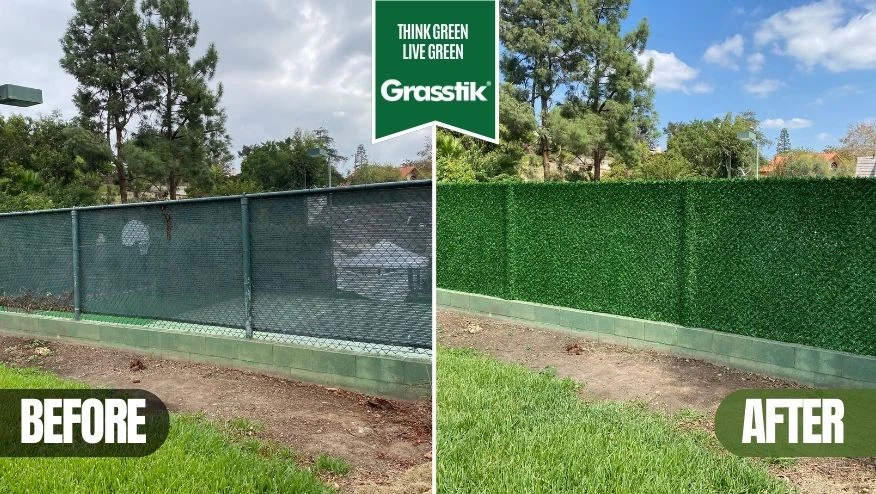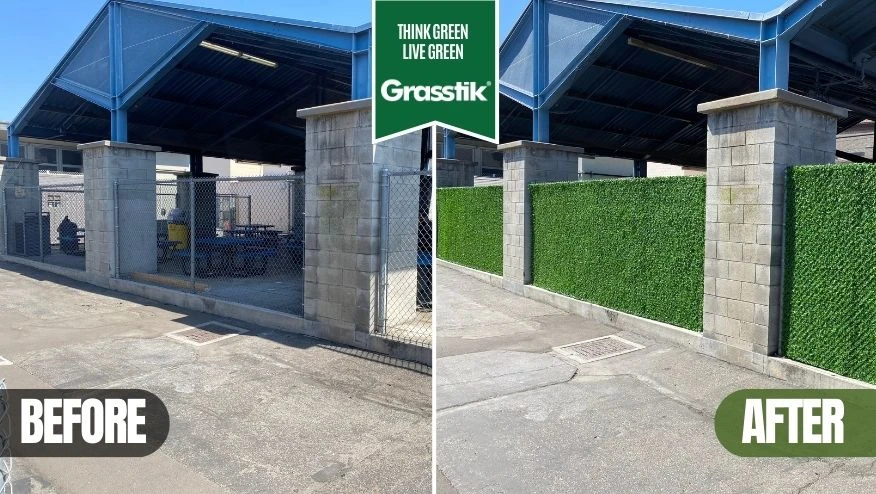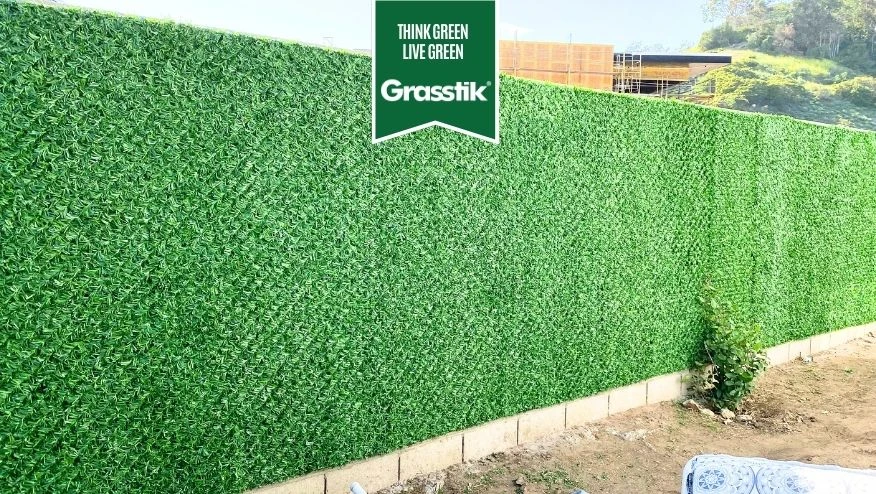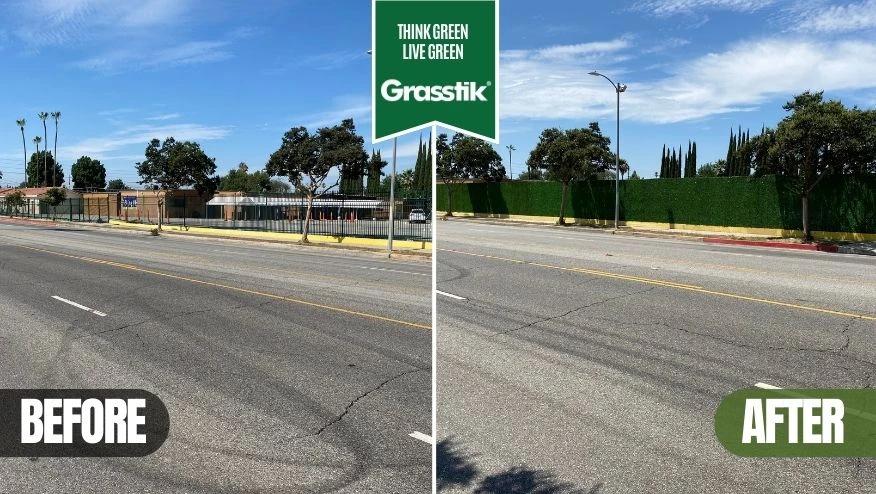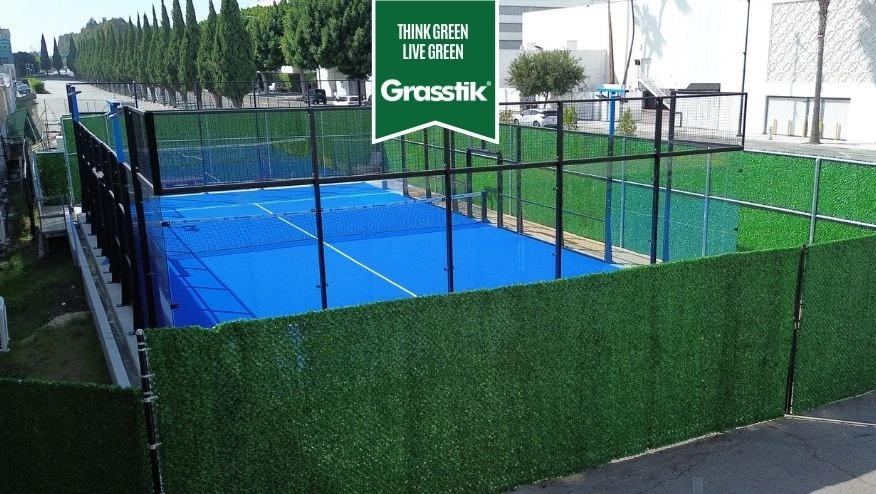
Have you thought about fencing your tennis court? Whether you’re a court owner, tennis enthusiast, or simply curious, this simple guide will tell you everything you need to know about tennis court fences and covers. You'll learn about the available options, how to enhance privacy, the appropriate tennis court fence height, and how to maintain your fences. Keep reading to get answers to your questions and learn more.
Why Are Tennis Court Privacy Fences Important?
Tennis court grass fence are crucial for various reasons. They help you establish boundaries with neighboring properties, ensure the safety of outside spectators and players, keep people and animals away from your court, provide much-needed shade on hot sunny days, and enhance the aesthetic appeal of your court. Most importantly, they offer privacy from outside eyes.
Key Benefits of Tennis Court Privacy Fences
Tennis court privacy fences provide most of the privacy fence benefits but they need to provide more protection as one of the sport field fences.
- Boundary Definition
- Safety
- Ball Containment
- Privacy
- Shade
- Aesthetic Appeal
- Wind Protection
- Noise Reduction
What Are the Different Types of Tennis Court Privacy Fences?
There are three primary fence options used for tennis courts:
- Wooden
- Vinyl
- Metal
Let's explore each of them, their differences, advantages, and disadvantages to determine which option suits your needs best.
Wooden Tennis Court Privacy Fences
Wood is a classic fencing material, known for its durability in various weather conditions like snow and strong winds, as well as its attractiveness. Wood grass fence panels, typically made of cedar or redwood (though alternative materials can be chosen), are naturally rot-resistant. While their cost varies depending on wood type and design, they generally fall in the mid-price range compared to other options. However, they do require regular staining or sealing to maintain their condition.
Advantages and Disadvantages of Wooden Tennis Court Privacy Fences
Advantages of Wooden Fences:
- Highly aesthetic appearance
- Durable in various weather conditions
- Customizable with paint or stain
- Reduce noise
- Provide privacy
Disadvantages of Wooden Fences:
- Prone to rot and warping over time
- Requires frequent maintenance
- Vulnerable to pests like termites
- Limited lifespan
When Should You Choose Wooden Tennis Court Privacy Fences?
Wooden tennis court fencing is a great choice if you value privacy, want to enhance the aesthetic appeal of your court, and have a limited installation budget. With regular maintenance, they can last around 15 to 20 years. Keep in mind that occasional repairs may be necessary for issues like warping or rot, and regular staining or sealing can help extend their lifespan.
Vinyl Tennis Court Privacy Fences
Vinyl fencing is a durable material made of polyvinyl chloride (PVC), a type of plastic. Sometimes referred to as PVC fencing, it offers low maintenance as it does not require painting or staining like wood fencing. Available in various styles and colors, there are different types of vinyl fences to choose from. Typically, they cost slightly more than wooden and chain-link fences.
Advantages and Disadvantages of Vinyl Tennis Court Privacy Fences
Advantages of Vinyl Fences:
- Longevity and resistance to moisture
- Maintenance-free
- Privacy provision
- Aesthetic appeal
- Pest-free
- Available in various options
Disadvantages of Vinyl Fences:
- Higher initial cost than other materials
- Vulnerability to extreme temperature changes
- Environmental impact during production and disposal.
When Should You Choose Vinyl Tennis Court Privacy Fences?
Vinyl fences are an excellent solution if you prioritize privacy, seek fences that complement your design style, and prefer minimal maintenance. They can last approximately 20-30 years with just occasional cleaning. However, they are best suited for regions with temperatures ranging between -40ºF and 140ºF, as extreme temperatures outside of this range may cause durability issues.
Metal Tennis Court Privacy Fences
If you're seeking a low-cost and low-maintenance option, consider metal fences for tennis courts. They are easy to install and come in various options.
Chain-link fences are among the most popular choices, consisting of woven wire usually made from galvanized or coated steel, defining the perimeter and allowing viewers to easily see the game while effectively serving the primary functions of safety and ball containment.
Another popular choice is wrought iron fencing, a type of metal fencing made from iron that is heated and then worked into various shapes and designs. Ornate and stylish, wrought iron fences can instantly elevate the visual appeal of a tennis court. They are long-lasting, resistant to weather, and require minimal maintenance. However, prices are higher than other fences and may vary depending on the design styles.
Advantages and Disadvantages of Metal Tennis Court Privacy Fences
Advantages of Metal Fences:
- Low-cost solution with chain-link
- Easy installation
- Long-lasting and weather-resistant
- Minimal maintenance required
- High strength and durability, suitable for withstanding impacts from tennis balls
- Greater visibility and flexibility compared to other materials
Disadvantages of Metal Fences:
- Chain-link may lack aesthetic appeal compared to other materials
- Higher initial cost for wrought iron fences
- Prices vary for wrought iron depending on design styles
When Should You Choose Metal Tennis Court Privacy Fences?
Metal tennis court fences are an excellent choice for those seeking security, durability, and easy maintenance. Depending on your budget and preferences, you can choose between chain-link or wrought iron fences. However, if you prioritize maximum privacy and want to shield your court from people passing by, metal fences may not be the best option. Nevertheless, you can address this issue by covering your fences with artificial grass or exploring other privacy-enhancing options.
Factors to Consider When Choosing Tennis Court Privacy Fences
- Environment and Design
Choose a fence that complements the surrounding environment and the design of your court. - Weather Consideration
Select fences with high durability to withstand extreme weather conditions, if your court is located in a region with high temperatures or strong winds. - Privacy Needs
Consider your privacy requirements and choose the fence material and design accordingly. Metals offer high visibility, while vinyl and wood provide greater privacy. - Height Adjustment
Decide on the height of the fences during the planning stage, considering local regulations and the purpose of the court (e.g., professional, community, or private use). - Budget Consideration
Establish a budget that covers material, design, installation, and maintenance costs for the fences. - Personal Preferences
Consider individual preferences and needs. Determine whether the priority is complete privacy, aesthetics, or low maintenance.
How Do You Determine the Best Height for Your Tennis Court Privacy Fence?
Consider the court's purpose and surrounding environment.The standard tennis court fence height is 10 feet. This height is sufficient to contain most balls within the court area. However, adjustments may be needed based on specific circumstances. For instance, if the court is in a residential area, a taller fence might be necessary to prevent balls from leaving the court and to ensure privacy for players and neighbors.
What Are the Maintenance Requirements for Different Tennis Court Privacy Fences?
Maintenance is vital for the long-term quality and durability of your fences, but the tasks vary based on the fence type, ranging from monthly to yearly upkeep. Regardless of the fence type, remember to:
- Oil gate bolts and hinges regularly.
- Promptly fix holes to prevent further damage.
- Regularly check for wear and tear, such as loose components or rust on metal fences.
- Ensure proper drainage and sewage system around the fence.
- Regularly remove plants and weeds.
- Clean the fence from dirt and litter.
Keeping the fence clean and well-maintained helps preserve its longevity and aesthetic appeal.
How Is a Tennis Court Privacy Fence Installed?
To ensure your fencing performs optimally and remains durable for years to come, it's crucial to have it properly constructed. The installation process typically involves the following steps:
- Clear the area where the fence will be installed
- Mark the perimeter for the fence, including determining entry points.
- Install fence posts into holes along the marked perimeter.
- Securely attach fencing material and grass fence rolls to the posts.
- Ensure the fence is properly aligned to the required height and above the ground.
- Install gates securely and ensure they open correctly.
- Conduct a thorough inspection after installation for any issues or necessary adjustments.
In summary, when selecting the right private fences for your tennis court, begin by identifying your needs, budget, and preferences. Then, choose the material and design that best suit them. Considering these factors will guide you to the perfect solution.

